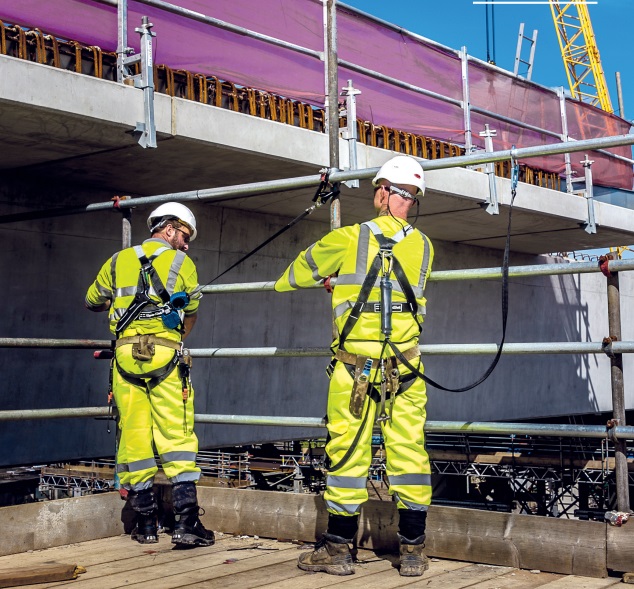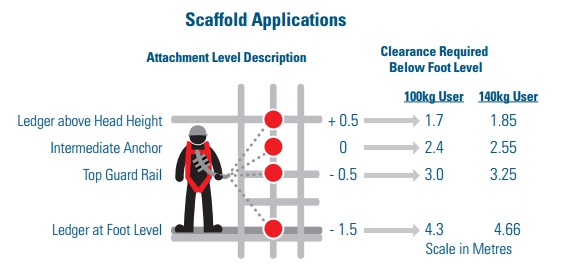Dynamic self-retracting lanyard
Dynamic self-retracting lanyards (DSL) are safety devices used for working at height. They work by minimising the fall distance, which in turn reduces the distance taken to dissipate the energy while keeping the forces created to a safe and acceptable level. This ensures that users are protected against falls from height, the injuries resulting from collisions with hazards and the forces exerted by the safety equipment.
A new milestone was achieved by SpanSet UK, with their 2016 launch of DSL 2. This delivers a 50% improvement compared to the fall clearance requirements set out in BS EN 355:2002 Personal protective equipment against falls from a height – Energy absorbers.
The product builds upon the original DSL by reducing safe clearance heights even further.
The problems associated with falling relate to both the freefall distance and the arrest distance.
The greater the freefall distance, the longer the arrest distance, but the more likely it is that there will be collisions with obstacles or a surface. Previously, lanyards could only provide the choice of freedom of movement or security, but were incapable of providing the right length for each task that would keep the potential fall to the minimum.
The DSL 2 is suitable in situations where there is low clearance and a lack of overhead anchorages (such as scaffold construction). It retracts exactly like a Fall Arrest Block but can be used as an Energy Absorbing Lanyard, anchored anywhere from below foot level to overhead. As a hybrid of Fall Arrest Blocks and Energy Absorbing Lanyards, the DSL 2 provides a balance in that the risks of stopping too quickly or too slowly are ameliorated.
In testing, the DSL 2 arrested falling completely before a conventional lanyard even became taut. The DSL 2 has been tested for users up to 140 kg.
[edit] Related articles on Designing Buildings Wiki
Featured articles and news
Infrastructure that connect the physical and digital domains.
Harnessing robotics and AI in challenging environments
The key to nuclear decommissioning and fusion engineering.
BSRIA announces Lisa Ashworth as new CEO
Tasked with furthering BSRIA’s impressive growth ambitions.
Public buildings get half a million energy efficiency boost
£557 million to switch to cleaner heating and save on energy.
CIOB launches pre-election manifesto
Outlining potential future policies for the next government.
Grenfell Tower Inquiry announcement
Phase 2 hearings come to a close and the final report due in September.
Progress from Parts L, F and O: A whitepaper, one year on.
A replicated study to understand the opinion of practitioners.
ECA announces new president 2024
Electrical engineer and business leader Stuart Smith.
A distinct type of countryside that should be celebrated.
Should Part O be extended to existing buildings?
EAC brands heatwave adaptation a missed opportunity.
Definition of Statutory in workplace and facilities management
Established by IWFM, BESA, CIBSE and BSRIA.
Tackling the transition from traditional heating systems
59% lack the necessary information and confidence to switch.
The general election and the construction industry
As PM, Rishi Sunak announces July 4 date for an election.
Eco apprenticeships continue help grow green workforce
A year after being recognised at the King's coronation.
Permitted development rights for agricultural buildings
The changes coming into effect as of May 21, 2024.
























